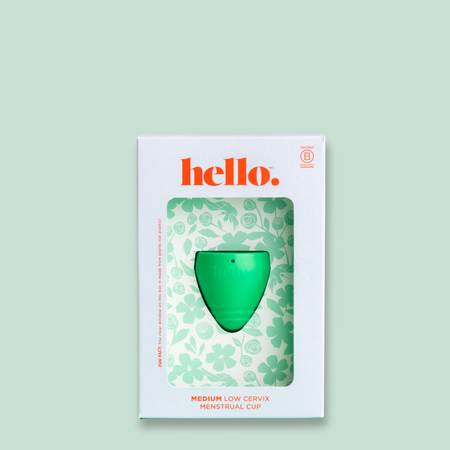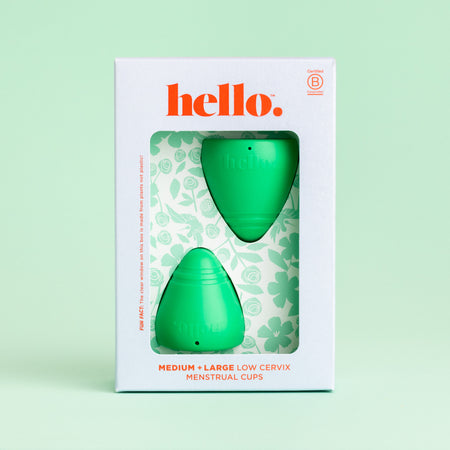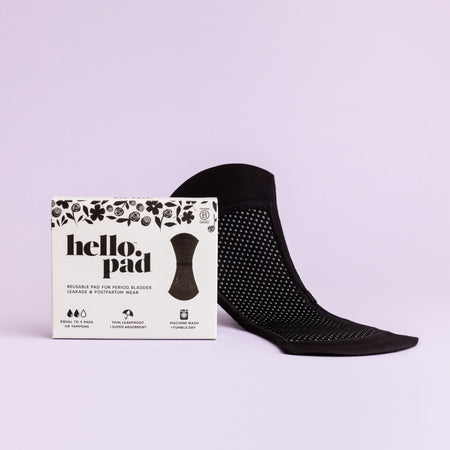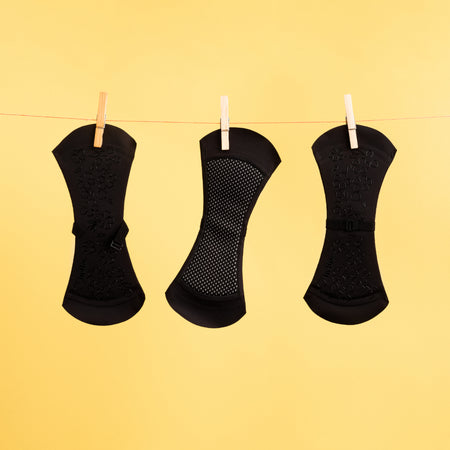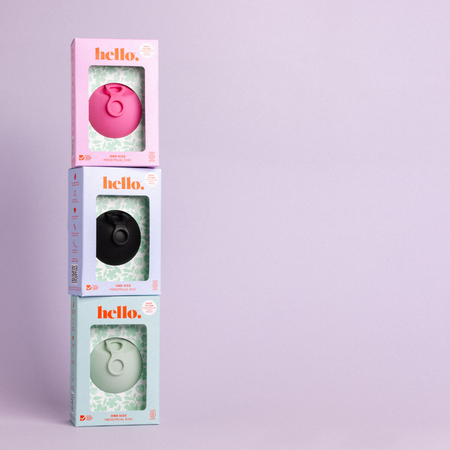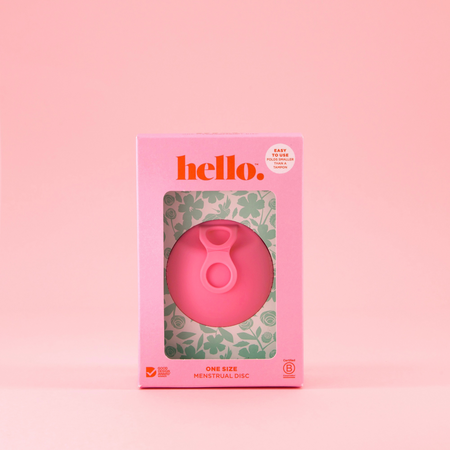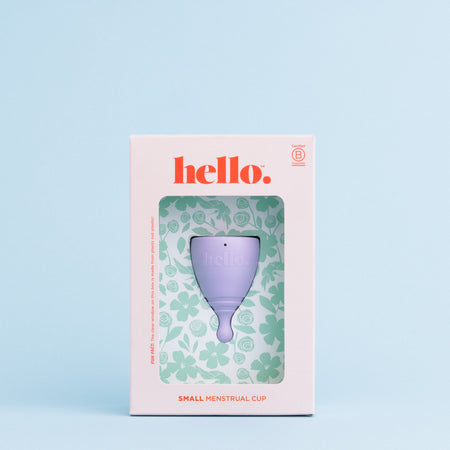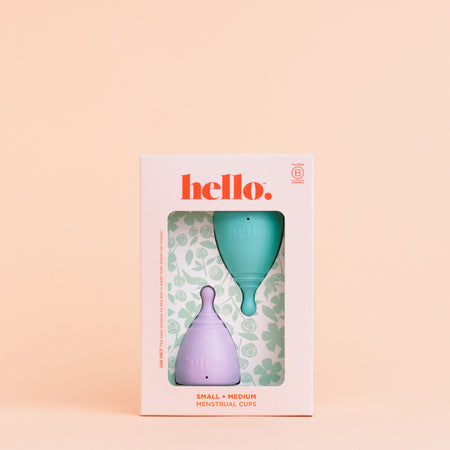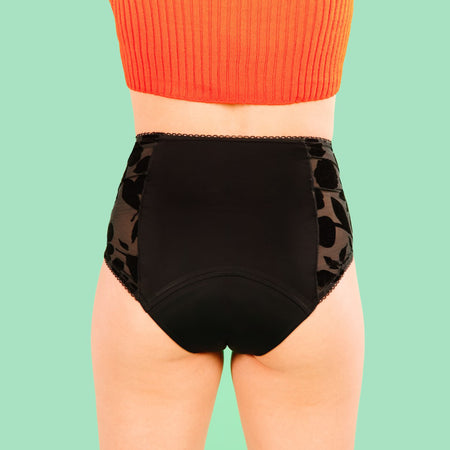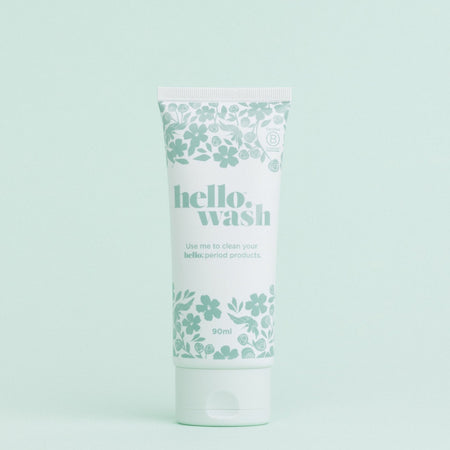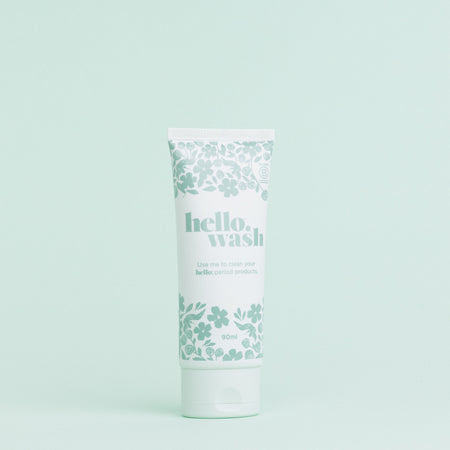If you're experiencing menstrual cup leaking when using your cup, don't fret–that's totally normal. Menstrual cups are brilliant—they are eco-friendly and save you a ton of money compared to single-use pads or tampons—but they can take a bit of getting used to at first. Don't worry, we've all been there, it's happened to the best of us. Let us help by breaking down the reasons why your cup might be annoyingly leaking and some tips to help you get to the root of your leakage problem so you can have a worry-free period experience!
10 Reasons Why Does My Menstrual Cup Leak
First, let's dive into the common reasons for “why does my menstrual cup leak?" so you can troubleshoot and enjoy a leak-free period.
1. Cup Inserted Incorrectly
If the cup isn’t inserted properly, it might not seal and could cause leaks. If it's your first time getting to know how to use a menstrual cup, take your time. To avoid menstrual cup leaking, you could try lubricating the rim of the cup with water or a water-based lubricant. This helps the cup slide in more easily.
2. The Cup Is Not Fully Opened!
Ensure your menstrual cup is fully open up and has formed a seal against your vaginal walls. Angle the tip along the back wall of your vagina and slide your cup in. When your fingers reach the entrance of your vagina, let your cup unfold inside the vagina and use the toggle to push your cup into place, keeping it angled toward your spine. The best fold to use to ensure your cup pops open easily is the shallow punch down fold. If the cup is too big for the user, it may not open properly and leak.
3. The Wrong Size and Shape For Your Body
Choosing the right size is crucial to preventing “menstrual cup leaking.” We don’t recommend buying your cup based on your flow alone. Instead, our sizing is based on fitness and age.
Take our size quiz to work out which Hello Cup best suits you.
4. Positioned Too Low
If positioned too low within the vulva, the menstrual cup won’t sit where it should and may result in unwanted leaks. To avoid “menstrual cup leaking” and a better fit, try pushing the cup higher up inside; it should feel comfortable when positioned correctly.
5. Poor Suction
Creating proper suction is crucial for preventing leaks. If your cup isn’t sealing in snugly as it should, it will unfortunately cause leakage. Try gently pinching the base tip of the cup and then giving it a bit of a jiggle—this can help get rid of any air pockets and create that very essential vacuum seal.
6. Unsuitable Material or Firmness
The material of your menstrual cup can also impact its performance. Do your research to find a cup that suits your body's needs best. It's important to check the design and materials used by each brand, ensuring they are ethically made with high-quality materials and quality assurance. We recommend looking for reputable brands, and investing in quality products. After all, your body is a temple, and we want to make sure it is looked after with the best possible products on the market.
Hello Cups are made from top notch medical-grade TPE (thermoplastic elastomer). They are hypoallergenic and free of BPAs, silicone, rubber and latex. The colours used are certified food grade and comply with EU and FDA standards. Hello Cups are vegan-certified.
The vaginal muscles can be strong so cups do need to be relatively firm to ensure they can stand up to the vaginal wall.
7. Clogged Rim Holes
Make sure to give your cup a thorough clean after each menstrual cycle to keep it in tip-top condition for next time. This will eliminate any pesky residues in the suction holes around the rim. You can also try filling your cup with water, placing your hand over the top, turning it upside down and squeezing the base. This will force water out of the holes and ensure they aren’t blocked.
8. Overflow Due to Heavy Flow
If your monthly flow is heavy, your cup might overflow in less time than you're used to. It may take a little time to figure out your body and flow, but we promise it'll be worth it. We do not recommend leaving your cup in for more than 12 hours.
9. Pushed While Pooping
It’s not glamorous, but sh!t happens, pun intended. Pushing while pooping can cause your menstrual cup to shift inside your vagina, breaking the seal and dislodging it, leading to leaks. Try to be gentle or consider reinserting your cup afterwards to avoid any mess.
10. Weak Pelvic Floor Muscles
Weak pelvic floor muscles can make it tricky for the cup to stay put, causing leaks. Strengthening these muscles through exercises like Kegels can really help improve your cup's performance and keep everything in place.
12 Tips on How to Stop Menstrual Cup from Leaking
Menstrual cup leaking can be frustrating, but with the right knowledge and adjustments, you can enjoy a leak-free period.
1. Choose the Right Size
Measuring your cervix is easy. Because your cervix can move during your cycle, for the most accurate results, we recommend following the below steps on days 1–3 of your period.
- Step 1: Wash your hands
- Step 2: Insert a finger into your vagina and feel for your cervix (sometimes, a gentle sweeping action will help find it). Your cervix will feel a bit like the tip of your nose—kind of soft and springy.
- Step 3: Take note of how far your finger is in and then remove it. Measure the length against a ruler.
- Step 4: Check your measurement with our guide below to determine your cervix height.
PRO TIP: Measure your cervix when you are in the shower!
2. Ensure the Cup Opens Up Fully
After inserting your menstrual cup, make sure the cup has fully expanded and formed a seal. Twist it or run a finger around the base to check.
3. Keep the Cup Dry
Keeping your cup dry before insertion can help it open more easily and form a better seal, reducing the risk of a menstrual cup leak.
4. Use the “One Foot Up” Method
Put one foot up on the toilet seat to help you insert the cup at the right angle and depth.
5. Slide the Cup Downward and Backward
Slide the cup in with a downward and backward motion to ensure it sits properly.
6. Wipe Away Excess Blood
After inserting the cup, wipe away any blood around the entrance of your vagina so you don’t mistake it for menstrual cup leaking.
7. Insert Until Fully Inside
Push the cup in until it’s all the way inside and sitting comfortably.
8. Clean the Rim Holes
Regularly clean the small holes around the edge of the cup to maintain proper suction.
9. Empty the Cup Frequently
On heavy flow days, empty your cup more frequently to prevent overflow.
10. Find Your Cervix Position
Knowing where your cervix is can make a world of difference in accurately inserting your cup and reducing leaks. Trust me, it's worth the time to find it!
11. Practice Makes Perfect
Don’t give up if you experience menstrual cup leaking at first. It might take a bit of practice to get the hang of using a menstrual cup, but you'll get there and it will be so worth it!
12. Seek Expert Advice
If you’re still having trouble, consult with a healthcare professional or look for online tutorials.
Best Menstrual Cup for Leakage Protection
Choosing a suitable menstrual cup can significantly change how you go about your periods. Each Hello Cup is created with a specific body type and flow volume in mind so that locating the perfect fit becomes easier for everyone. On Hello Period's website, there are plenty of helpful materials and an amazing questionnaire that makes it easy for you to find the right cup for you and prevent menstrual cup leaking.
Wrapping Up!
When it comes to your period, switching to a menstrual cup can be an absolute game changer. The above tips about menstrual cup leaking can help you ensure a proper fit and seal. With a bit of patience and these handy tricks up your sleeve, you can minimize leaks and enjoy all the amazing benefits that come with using a menstrual cup. If this sounds like something for you, then head over to Hello Period to check through their range of cups to find the perfect cup to suit your needs.
FAQs
Let's dive into the most common questions and concerns about “menstrual cup leaking” to help you achieve a worry-free period experience.
1. Why does my menstrual cup leak when it’s not full?
Is your menstrual cup leaking but not full? Yes, if it's not sealed properly or isn’t positioned correctly. Make sure the cup has fully opened once inserted and that it’s creating a snug seal against your vaginal walls.
2. Do menstrual cups leak when lying down?
If you’ve popped your menstrual cup in correctly, it shouldn’t leak when you’re lying down. To avoid “menstrual cup leaking,” make sure the cup is properly sealed before bedtime. Try switching positions or giving the cup a little twist to ensure the seal is nice and tight.
3. Why does my menstrual cup only leak at night?
Night-time leaks can occur if the cup shifts during sleep. This can happen if you move around a lot in your sleep. Consider using a firmer cup that might maintain the seal better during movement or try emptying the cup right before bed for added peace of mind.
4. Why is my menstrual cup leaking clear fluid?
Clear fluid leaks could be due to vaginal discharge, not menstrual blood. Ensure your cup is properly sealed to prevent leaks. Sometimes the cup might not catch all vaginal secretions, which is okay but might require you to check and adjust the fit more frequently.
If you have any more questions about “menstrual cup leaking,” feel free to reach out to us. At Hello Period, no topic is too personal—we've heard it all and we're happy to help. Send us an email at hello@helloperiod.com










